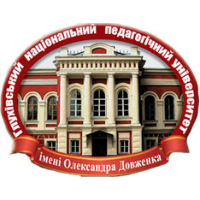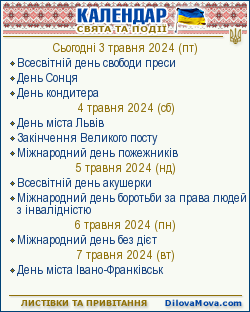 English
English Русский
Русский Українська
Українська
Languages
KUROK O. I., BIELASHOV V. I. Hlukhivites in the development of Ukraine’s highest academic institution
On November 27, 2018 the National Academy of Sciences of Ukraine, which is the powerful center of Ukrainian intellectual thought, celebrated its 100th anniverary since the time of its founding. The name of the Academy was changed four times. In 1918-1921 it was known as the Ukrainian Academy of Sciences (UAS), from 1921 to 1936 – as the All-Ukrainian Academy of Sciences (AUAS), in 1936-1991 as the Academy of Sciences of the Ukrainian SSR, from 1991 to 1993 − as the Academy of Sciences of Ukraine, and since 1994 its name has been the National Academy of Sciences of Ukraine (NAS of Ukraine).
Political and intellectual elite of Hetmanate Ukraine with its important center in the capital town of Hlukhiv understood well that in the second half of the 18th century the Kyiv Mohyla Academy began to lag behind the needs of the contemporary science and lose the role of the leading scientific, cultural and educational center.
The representative of this elite F. Y. Tumansky was the native of the village Rodyvonivka (near Hlukhiv). He was one of the best graduates of the Kenigsberg University as well as the member of the Royal Prussian German Society, and in the future – the official of the Second Malorossiysk Collegium. In 1779 he was elected as the corresponding member of the St. Petersburg Academy of Sciences. Meeting the interests of the scientists, F. Y. Tumansky worked out the project of organizing the branch of the St. Petersburg Academy of Sciences in Hlukhiv named the Academic Assembly.
Almost 150 years later, at the period of the Ukrainian hetman P. Skoropadsky ruling, the native of the village Esman, Hlukhiv district, the graduate of the Hlukhiv pro-gymnasium M. P. Vasylenko was the main initiator of organizing the Ukrainian Academy of Sciences. Having sucessfully passed exams for master‟s degree at Kyiv University he received the title of the private-senior lecturer of Russian history. After the overthrow of the autocracy (in 1917) he worked as a trustee of Kyiv educational district, the associate minister of education of the Provisional Government. At the period of the Central Rada ruling he became the member of the General Court of the UPR, and under hetman P. Skoropadsky leadership he was the minister of education and arts, the president of the State Senate (supreme judicial institution).
M. P. Vasylenko understood organizing the Academy of Sciences as the national need. The commission, convened by him, which included prominent Ukrainian and Russian scholars, was able to work out the structure of the Academy and its Statute under the comprehensive support of the hetman P. Skoropadsky. In the summer of 1920, during the elections of new members of the Ukrainian Academy of Sciences, M. P. Vasylenko was elected as the academician. Soon he was elected the chairman of the Academy too, and in July 1921 – as the second president of the Academy. He stayed in this post until February 1922 but he was not approved for it by the soviet government.
M. P. Vasylenko scientific heritage includes about 500 works. Memory of the outstanding scientist M. P. Vasylenko has being worthy honored. The street in Kyiv was named after him, the memorial plaques were installed in Esman village and in the town of Hlukhiv as well, the commemorative coin was issued in Kyiv. The National Academy of Sciences awards the reward named after M. P. Vasylenko.
V. A. Kosynsky, who was the professor, the associate minister, the minister of labor in P. Skoropadsky Government, also worked fruitfully on the project of founding the Ukrainian Academy of Sciences. He was the native of Doroshivka village, Hlukhiv (now Yampil) district. In his childhood he studied at Novhorod-Siversky gymnasium, in 1893 entered the faculty of Physics and Mathematics of Moscow University. Four years later V. A. Kosynsky graduated from the mathematical department of this faculty, semalteniously having passed exams to prove mastering the full Law course.
He worked productively as the professor of Riga polytechnic institute and from 1909 to 1918 as the professor at the chair of political economy of the agricultural department of Kyiv polytechnic institute teaching Political economy and Statistics at Kyiv University.
According to the well-known law dated November 14, the professor of Kyiv polytechnic institute V. A. Kosynsky became the full member of the Ukrainian Academy of Sciences of social sciences department. But he did not receive the right of a regular academician as he belonged to the Hetman Government. As the Directorate of the UPR gained power in Kyiv (December 1918) V. A. Kosynsky was declared as the outlawed and was forced to hide. Nothing changed in February 1919 with the Red Army coming to Kyiv. Only in May 1919 after numerous appeals of the Academy Presidium V. A. Kosynsky was restored in civil rights. In the spring of 1921 he was sent to Kamyanets-Podilsky for lecturing and conducting economic researches but he never returned. His further fate is not exactly known. In 1928 the Academy believed that he died.
So, we should know that the history of founding the National Academy of Sciences of Ukraine is very closely connected with Hlukhivites, especially concerning the 100th anniversary of this Ukraine‟s higher academic institution.
Key words: NAS of Ukraine, the Ukrainian Academy of Sciences, Hlukhiv, the native, F. Y. Tumansky, M. P. Vasylenko, V. A. Kosynsky
- 255 reads





